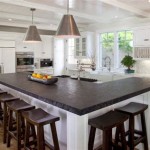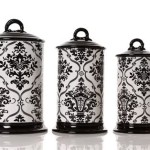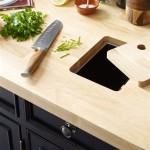Upholstery Fabric for Kitchen Chairs: A Comprehensive Guide
Kitchen chairs are subject to considerable wear and tear. The kitchen environment exposes them to food spills, moisture, and frequent use. Therefore, selecting the appropriate upholstery fabric is crucial for ensuring longevity, ease of maintenance, and aesthetic appeal. Choosing the right fabric involves evaluating factors such as durability, stain resistance, comfort, and style. This article provides a detailed exploration of various upholstery fabrics suitable for kitchen chairs, examining their properties, advantages, and disadvantages.
Durability and Wear Resistance
Durability is paramount when selecting upholstery fabric for kitchen chairs. Fabrics that can withstand frequent use and resist abrasion are essential. Several options excel in this area, each offering unique characteristics.
Microfiber: Microfiber, often composed of polyester or nylon fibers, is a synthetic fabric known for its exceptional durability. Its tightly woven construction provides resistance to abrasion, tearing, and pilling. Microfiber’s dense structure also makes it resistant to snagging, an important consideration if pets are present. Furthermore, microfiber is relatively easy to clean, contributing to its long-term appearance.
Canvas: Canvas is a sturdy, plain-woven fabric traditionally made from cotton or linen, but modern versions often incorporate synthetic fibers for enhanced durability. Canvas is exceptionally resistant to wear and tear, making it a suitable choice for high-traffic areas like the kitchen. While generally durable, canvas can be prone to staining if not treated with a stain-resistant finish.
Crypton: Crypton is a patented fabric treatment that is applied to various base textiles. The treatment renders the fabric virtually impervious to stains, moisture, and microbes. Crypton fabrics are exceptionally durable and easy to clean, making them an ideal choice for kitchen chairs. The Crypton treatment does not typically alter the fabric’s texture or appearance significantly, allowing for a wide range of aesthetic options.
Outdoor Fabrics: While typically associated with outdoor furniture, outdoor fabrics such as Sunbrella or similar acrylic-based materials are remarkably durable and stain-resistant. These fabrics are designed to withstand harsh weather conditions, including UV exposure, moisture, and temperature fluctuations. Their resistance to fading, mildew, and stains makes them a practical and long-lasting option for kitchen chair upholstery.
Vinyl: Vinyl is a synthetic material known for its exceptional durability and ease of cleaning. It is waterproof and stain-resistant, making it a practical choice for kitchens where spills are common. While traditionally associated with a less sophisticated aesthetic, modern vinyl options are available in a variety of textures and patterns that can mimic the appearance of natural fabrics.
Stain Resistance and Cleanability
The kitchen environment presents a high risk of food spills and stains. Therefore, selecting an upholstery fabric that is easy to clean and resistant to staining is crucial for maintaining its appearance over time. Several fabrics offer superior stain resistance and cleanability.
Treated Fabrics: Applying a stain-resistant treatment to a fabric can significantly enhance its ability to repel liquids and resist staining. Treatments like Scotchgard or similar protectants create a barrier that prevents spills from penetrating the fabric fibers. This makes it easier to wipe away spills before they have a chance to set. However, the effectiveness of these treatments can diminish over time and may require reapplication.
Solution-Dyed Acrylic: Solution-dyed acrylic fabrics, like Sunbrella, have color incorporated into the fiber itself during the manufacturing process. This makes them exceptionally resistant to fading and staining. Because the color is part of the fiber, it won't wash away or fade with cleaning. These fabrics are also highly resistant to mildew and mold, making them a smart choice for damp environments.
Leather (Protected/Finished): While leather offers a luxurious look and feel, it can be susceptible to staining if not properly protected. Protected or finished leather has a coating that provides a barrier against spills and stains. This type of leather is easier to clean and maintain than aniline or unfinished leather. Regularly cleaning and conditioning protected leather will help to maintain its appearance and prolong its lifespan.
Polyester Blends: Polyester is inherently stain-resistant and easy to clean. Blending polyester with other fibers can enhance the overall durability and performance of the fabric. Polyester blends are often a cost-effective option that offers a good balance of durability, stain resistance, and aesthetic appeal.
Consider Color and Pattern: Darker colors and patterned fabrics can help to conceal stains and dirt more effectively than light, solid-colored fabrics. Choosing a fabric with a busy pattern can also camouflage minor imperfections and extend the time between cleanings.
Comfort and Style Considerations
While durability and stain resistance are essential, comfort and style should also be considered when selecting upholstery fabric for kitchen chairs. The fabric should be comfortable to sit on and complement the overall aesthetic of the kitchen.
Natural Fibers: Fabrics such as cotton, linen, and wool offer a natural feel and can be more breathable than synthetic fabrics. However, natural fibers are generally less resistant to stains and wear than synthetics. Blending natural fibers with synthetic fibers can improve their durability and stain resistance while retaining some of their natural comfort.
Texture and Weave: The texture and weave of the fabric can significantly impact its comfort and aesthetic appeal. A smooth, tightly woven fabric will be more durable and resistant to stains, while a textured fabric can add visual interest and depth. Consider the overall style of the kitchen when selecting the texture and weave of the upholstery fabric. A modern kitchen may benefit from a sleek, minimalist fabric, while a more traditional kitchen may suit a textured, patterned fabric.
Color and Pattern Selection: The color and pattern of the upholstery fabric should complement the existing color scheme and décor of the kitchen. Consider the color of the walls, cabinets, and flooring when making your selection. Neutral colors such as beige, gray, and white are versatile and can be easily coordinated with a variety of styles. Bold colors and patterns can add personality and visual interest to the kitchen, but they should be used judiciously to avoid overwhelming the space.
Fabric Softness: The softness of the fabric will impact the comfort of the chair. Fabrics with a higher thread count tend to be softer and more comfortable to sit on. Consider the intended use of the chairs when selecting the fabric softness. If the chairs are used for long periods, a softer, more comfortable fabric will be preferable.
Consider the Chair Style: The style of the chair itself should influence the fabric choice. For example, a sleek, modern chair might look best with a smooth, minimalist fabric like microfiber or vinyl, while a more traditional chair might suit a textured fabric like linen or a patterned fabric like floral print.
Ultimately, the best upholstery fabric for kitchen chairs is one that strikes a balance between durability, stain resistance, comfort, and style. Consider the specific needs and preferences of your household when making your selection. Researching various fabric options and testing samples can help to ensure that you choose a fabric that will provide long-lasting beauty and functionality to your kitchen chairs.
Beyond the considerations already outlined, the practicalities of upholstery should be addressed. The complexity of the chair's design influences the ease of reupholstering. Chairs with simple, flat surfaces are generally easier and less expensive to reupholster than chairs with intricate curves and detailing. If professional reupholstery is anticipated, obtaining quotes and discussing fabric choices with an experienced upholsterer is advisable. They can provide valuable insights regarding fabric suitability and the overall cost of the project.
The issue of fabric breathability should also be considered, particularly in warmer climates. Fabrics like cotton and linen are naturally more breathable than synthetic materials, allowing for better air circulation and preventing the buildup of moisture and heat. This can contribute to a more comfortable seating experience, especially during extended periods of use. While synthetic fabrics may offer superior durability and stain resistance, they can sometimes feel less comfortable and more prone to trapping heat.
Budget is also a critical factor in selecting upholstery fabric. Prices can vary significantly depending on the type of fabric, its quality, and any special treatments applied. Setting a realistic budget before beginning the selection process can help to narrow down the options and prevent overspending. It's important to remember that investing in a higher-quality, more durable fabric can often be more cost-effective in the long run, as it will require less frequent replacement. Balancing cost with the desired level of durability, stain resistance, comfort, and style is key to making a smart and satisfying purchase.

Struggling For Fabric Inspiration Your Dining Chair Makeover

How To Choose The Right Upholstery Fabric For Your Dining Room Chairs

Dining Chair Plan Combining Patterned Fabric And Solid Vinyl Addicted 2 Decorating

The Best Upholstery Fabric For High End Dining Chairs Carrocel

Struggling For Fabric Inspiration Your Dining Chair Makeover

Choose The Best Upholstery Fabrics To Revamp Your Dining Room Chairs

Fabric Upholstered Dining Chairs Lahome Com

How To Reupholster Dining Chairs Diy Tutorial

Choose The Best Upholstery Fabrics To Revamp Your Dining Room Chairs

How To Redo The Fabric On Kitchen Chairs Stockpiling Moms








